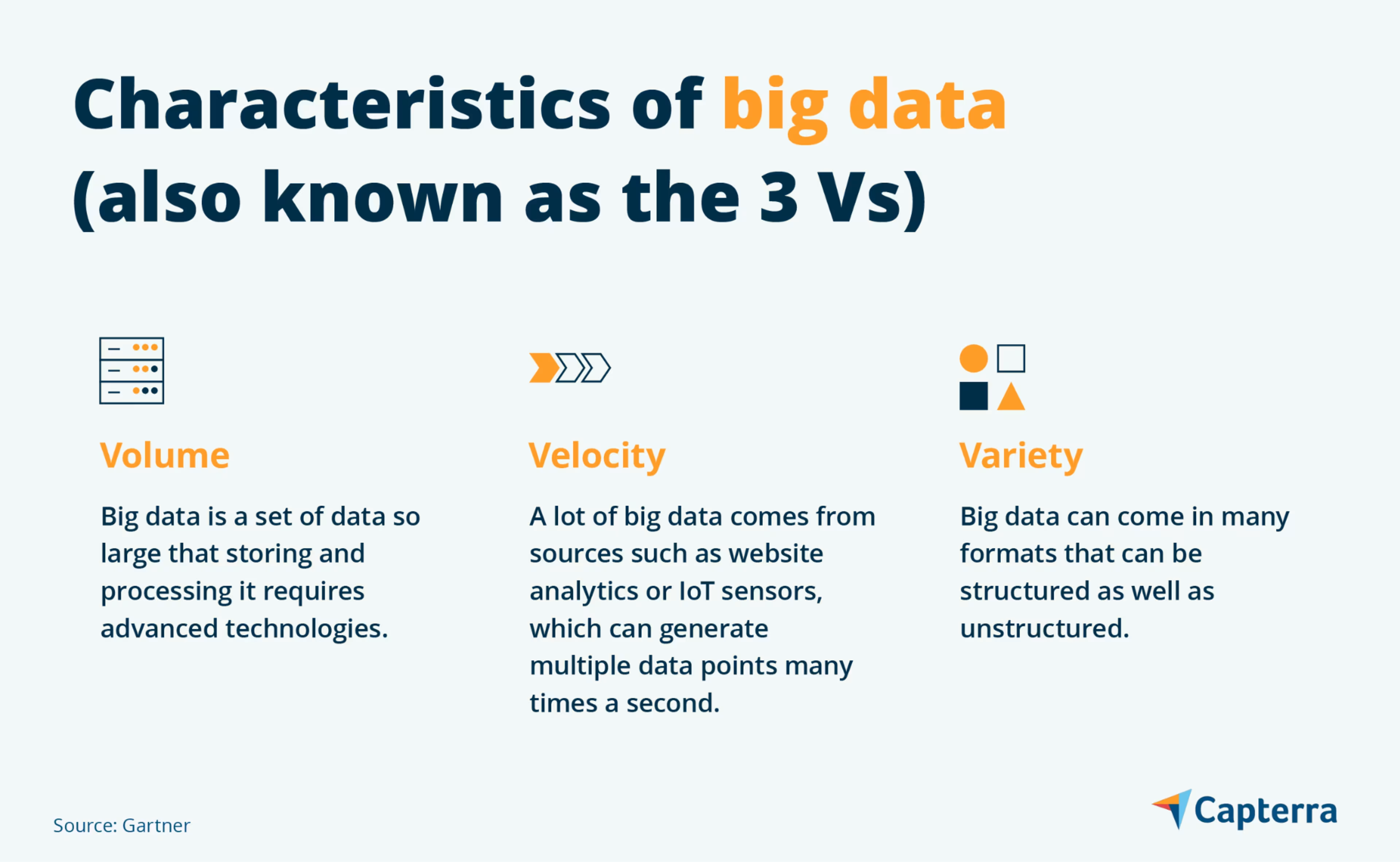Learn about the challenges of big data projects so you can prepare for one and succeed.
Most experts agree that big data has become a game changer for businesses in a wide variety of modern industries. In a recent survey, 97% of organizations say they are investing in big data technologies[1].
But in that same survey, only a little more than a quarter of the companies report that they've transformed into a data-driven organization, and only 19% indicate they've established a data culture.
Why is there this discrepancy? Because implementing a big data solution comes with some challenges. Before we get into what those challenges are and how you solve them, let's look at why these challenges exist.
Why is big data challenging?
First, it helps to define what big data is. There is no specific number of gigabytes, terabytes, or petabytes that make big data different from "normal data." The amount of data processed daily around the world is constantly increasing, which makes big data a relative term.
The three Vs are key to why big data is challenging.

Now let's look at the specific big data problems and solutions.
8 big data challenges and solutions
When implementing a big data solution, here are some of the common challenges your business might run into, along with solutions.
1. Managing massive amounts of data
It's in the name—big data is big. Most companies are increasing the amount of data they collect daily. Eventually, the storage capacity a traditional data center can provide will be inadequate, which worries many business leaders. Forty-three percent of IT decision-makers in the technology sector worry about this data influx overwhelming their infrastructure[2].
To handle this challenge, companies are migrating their IT infrastructure to the cloud. Cloud storage solutions can scale dynamically as more storage is needed. Big data software is designed to store large volumes of data that can be accessed and queried quickly.
2. Integrating data from multiple sources
The data itself presents another challenge to businesses. There is a lot, but it is also diverse because it can come from a variety of different sources. A business could have analytics data from multiple websites, sharing data from social media, user information from CRM software, email data, and more. None of this data is structured the same but may have to be integrated and reconciled to gather necessary insights and create reports.
To deal with this challenge, businesses use data integration software, ETL software, and business intelligence software to map disparate data sources into a common structure and combine them so they can generate accurate reports.
3. Ensuring data quality
Analytics and machine learning processes that depend on big data to run also depend on clean, accurate data to generate valid insights and predictions. If the data is corrupted or incomplete, the results may not be what you expect. But as the sources, types, and quantity of data increase, it can be hard to determine if the data has the quality you need for accurate insights.
Fortunately, there are solutions for this. Data governance applications will help organize, manage, and secure the data you use in your big data projects while also validating data sources against what you expect them to be and cleaning up corrupted and incomplete data sets. Data quality software can also be used specifically for the task of validating and cleaning your data before it is processed.
4. Keeping data secure
Many companies handle data that is sensitive, such as:
Company data that competitors could use to take a bigger market share of the industry
Financial data that could give hackers access to accounts
Personal user information of customers that could be used for identity theft
If a business handles sensitive data, it will become a target of hackers. To protect this data from attack, businesses often hire cybersecurity professionals who keep up to date on security best practices and techniques to secure their systems.
Whether you hire a consultant or keep it in-house, you need to ensure that data is encrypted, so the data is useless without an encryption key. Add identity and access authorization control to all resources so only the intended users can access it. Implement endpoint protection software so malware can't infect the system and real-time monitoring to stop threats immediately if they are detected.
5. Selecting the right big data tools
Fortunately, when a business decides to start working with data, there is no shortage of tools to help them do it. At the same time, the wealth of options is also a challenge. Big data software comes in many varieties, and their capabilities often overlap. How do you make sure you are choosing the right big data tools?
Often, the best option is to hire a consultant who can determine which tools will fit best with what your business wants to do with big data. A big data professional can look at your current and future needs and choose an enterprise data streaming or ETL solution that will collect data from all your data sources and aggregate it. They can configure your cloud services and scale dynamically based on workloads. Once your system is set up with big data tools that fit your needs, the system will run seamlessly with very little maintenance.
Searching for a data analytics company to help manage your big data? We’ve got you covered. Check out our list of companies in the following areas:
6. Scaling systems and costs efficiently
If you start building a big data solution without a well-thought-out plan, you can spend a lot of money storing and processing data that is either useless or not exactly what your business needs. Big data is big, but it doesn't mean you have to process all of your data.
When your business begins a data project, start with goals in mind and strategies for how you will use the data you have available to reach those goals. The team involved in implementing a solution needs to plan the type of data they need and the schemas they will use before they start building the system so the project doesn't go in the wrong direction. They also need to create policies for purging old data from the system once it is no longer useful.
7. Lack of skilled data professionals
One of the big data problems that many companies run into is that their current staff have never worked with big data before, and this is not the type of skill set you build overnight. Working with untrained personnel can result in dead ends, disruptions of workflow, and errors in processing.
There are a few ways to solve this problem. One is to hire a big data specialist and have that specialist manage and train your data team until they are up to speed. The specialist can either be hired on as a full-time employee or as a consultant who trains your team and moves on, depending on your budget.
Another option, if you have time to prepare ahead, is to offer training to your current team members so they will have the skills once your big data project is in motion.
A third option is to choose one of the self-service analytics or business intelligence solutions that are designed to be used by professionals who don't have a data science background.
8. Organizational resistance
Another way people can be a challenge to a data project is when they resist change. The bigger an organization is, the more resistant it is to change. Leaders may not see the value in big data, analytics, or machine learning. Or they may simply not want to spend the time and money on a new project.
This can be a hard challenge to tackle, but it can be done. You can start with a smaller project and a small team and let the results of that project prove the value of big data to other leaders and gradually become a data-driven business. Another option is placing big data experts in leadership roles so they can guide your business towards transformation.
Learn more about big data
Implementing big data technology can be a game changer for your business and make it more competitive by providing insights that other companies in your industry don't have access to. This doesn't mean that this process won't come with some challenges, but by knowing what they are and preparing for them, you can prevent them from slowing down your business's digital transformation.
To learn more about big data and how it is used, check out these articles:

